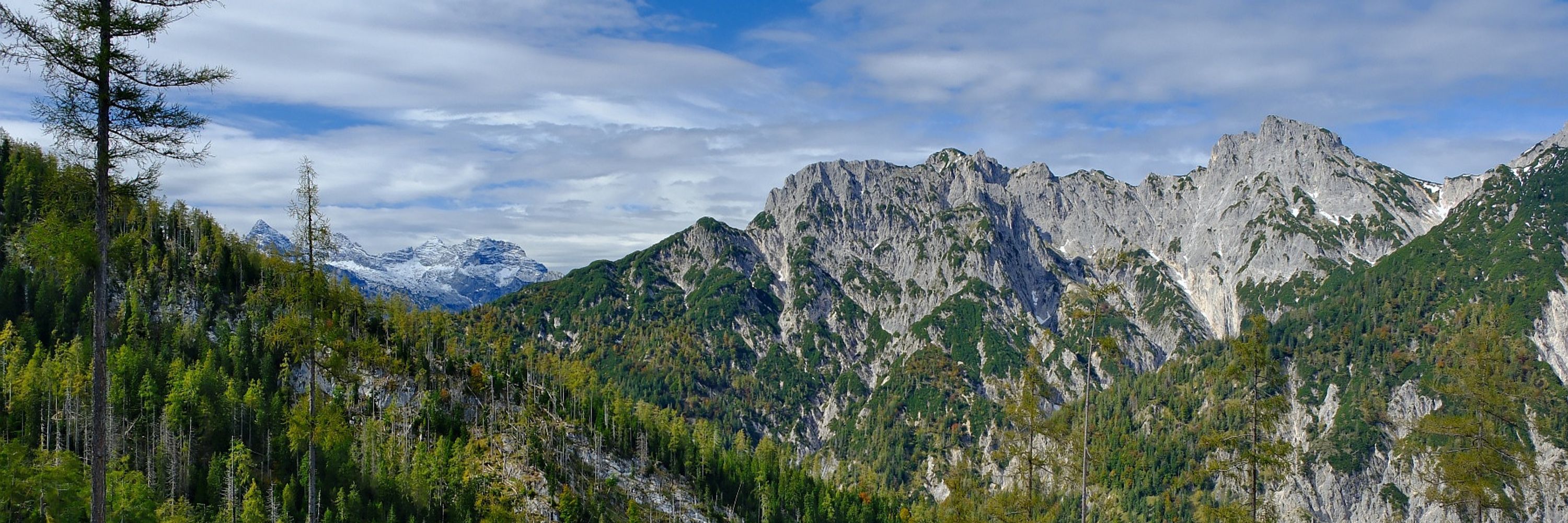
Rupert Seidl
@rupertseidl.bsky.social
Professor at Technical University of Munich
Head of Research at Berchtesgaden National Park
Ecosystem Dynamics - Forest Management - Mountain Landscapes
https://www.lss.ls.tum.de/edfm | https://www.nationalpark-berchtesgaden.bayern.de
Head of Research at Berchtesgaden National Park
Ecosystem Dynamics - Forest Management - Mountain Landscapes
https://www.lss.ls.tum.de/edfm | https://www.nationalpark-berchtesgaden.bayern.de
Global, multi-scale standing deadwood segmentation in centimeter-scale aerial images. Important work by J. Möhring, @cmosig.bsky.social, T. Kattenborn et al. in detecting dead trees across biomes from high resolution aerial images. doi.org/10.1016/j.op...

November 3, 2025 at 6:33 AM
Global, multi-scale standing deadwood segmentation in centimeter-scale aerial images. Important work by J. Möhring, @cmosig.bsky.social, T. Kattenborn et al. in detecting dead trees across biomes from high resolution aerial images. doi.org/10.1016/j.op...
#2: Landscape context modulates the effect of local canopy cover on forest multidiversity across elevations by T. Richter doi.org/10.1111/1365...
Thanks to @sebseibold.bsky.social and many others for their contributions, looking forward to continue our efforts to better understand biodiv change!
Thanks to @sebseibold.bsky.social and many others for their contributions, looking forward to continue our efforts to better understand biodiv change!


October 31, 2025 at 1:46 PM
#2: Landscape context modulates the effect of local canopy cover on forest multidiversity across elevations by T. Richter doi.org/10.1111/1365...
Thanks to @sebseibold.bsky.social and many others for their contributions, looking forward to continue our efforts to better understand biodiv change!
Thanks to @sebseibold.bsky.social and many others for their contributions, looking forward to continue our efforts to better understand biodiv change!
Great to see the results of our massive biodiversity assessment at Berchtesgaden Natl. Park pour in! Cool insights on patterns & drivers of multidiversity!
#1 Macro- and microclimate interactively shape species diversity of multiple taxa in mountain landscapes by L. Geres. doi.org/10.1002/ecog...
#1 Macro- and microclimate interactively shape species diversity of multiple taxa in mountain landscapes by L. Geres. doi.org/10.1002/ecog...

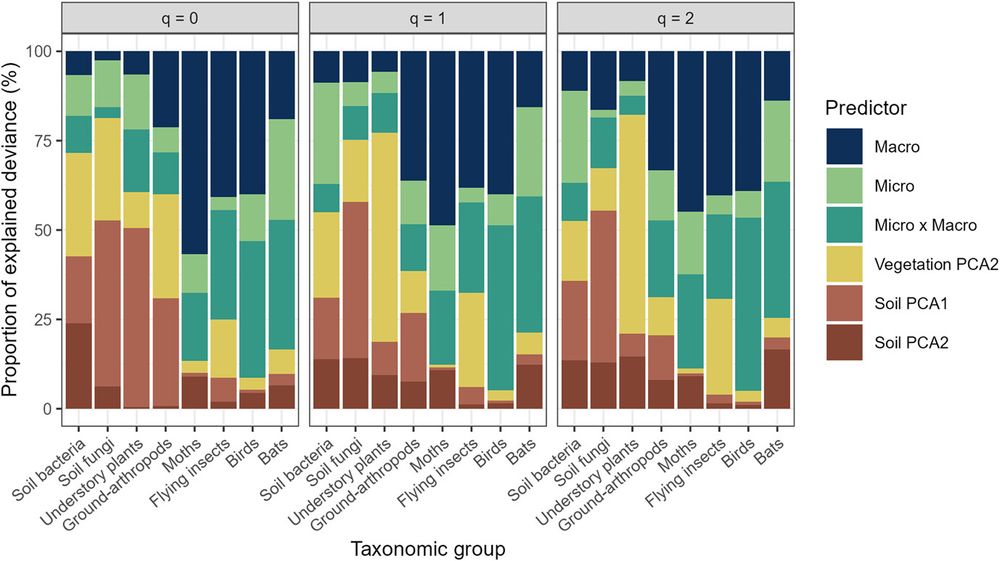
October 31, 2025 at 1:46 PM
Great to see the results of our massive biodiversity assessment at Berchtesgaden Natl. Park pour in! Cool insights on patterns & drivers of multidiversity!
#1 Macro- and microclimate interactively shape species diversity of multiple taxa in mountain landscapes by L. Geres. doi.org/10.1002/ecog...
#1 Macro- and microclimate interactively shape species diversity of multiple taxa in mountain landscapes by L. Geres. doi.org/10.1002/ecog...
Biotic disturbances are synchronized across large spatial scales. Also, they are consistently greater under warmer and drier conditions across feeding guilds and host types, suggesting that climate change could substantially amplify biotic forest disturbances.

October 30, 2025 at 1:39 PM
Biotic disturbances are synchronized across large spatial scales. Also, they are consistently greater under warmer and drier conditions across feeding guilds and host types, suggesting that climate change could substantially amplify biotic forest disturbances.
Mortality from fire & wind is increasing in Europe's forests, but what about biotic disturbances? A new, massive dataset compiled by @thlasny.bsky.social and many local experts shows a mixed picture: While wood borers increase strongly, defoliator activity generally decreases doi.org/10.1111/gcb....

October 30, 2025 at 1:39 PM
Mortality from fire & wind is increasing in Europe's forests, but what about biotic disturbances? A new, massive dataset compiled by @thlasny.bsky.social and many local experts shows a mixed picture: While wood borers increase strongly, defoliator activity generally decreases doi.org/10.1111/gcb....
Great to be visiting the Basque Centre for Climate Change in beautiful Bilbao this week! Thanks @philmartin.bsky.social for having me, and for showing me around! I particularly enjoyed visiting really exciting experiments, e.g. on European beech recovery at the temperate-mediterranean ecotone!



October 28, 2025 at 10:13 AM
Great to be visiting the Basque Centre for Climate Change in beautiful Bilbao this week! Thanks @philmartin.bsky.social for having me, and for showing me around! I particularly enjoyed visiting really exciting experiments, e.g. on European beech recovery at the temperate-mediterranean ecotone!
How do changes in disturbance and regeneration interact to affect widely different temperate forest ecosystems? New insights from a simulation experiment on forest change, led by @christinadollinger.bsky.social, out now in Global Ecology and Biogeography doi.org/10.1111/geb.... #ERCresearch


October 22, 2025 at 4:50 PM
How do changes in disturbance and regeneration interact to affect widely different temperate forest ecosystems? New insights from a simulation experiment on forest change, led by @christinadollinger.bsky.social, out now in Global Ecology and Biogeography doi.org/10.1111/geb.... #ERCresearch
How forest disturbances can lead to tipping points in the wood value chain. Great work coming out of the RESONATE project, led by T. Boiger and T. Stern from @uni-graz.at
doi.org/10.1007/s110...
doi.org/10.1007/s110...

October 20, 2025 at 6:18 AM
How forest disturbances can lead to tipping points in the wood value chain. Great work coming out of the RESONATE project, led by T. Boiger and T. Stern from @uni-graz.at
doi.org/10.1007/s110...
doi.org/10.1007/s110...
Great new paper out by @ttkeller.bsky.social, using simulations to explore if and how fire exclusion zones can enhance tree regeneration. I particularly enjoyed the interaction between scientists and managers on this one, which added another important dimension to the work! doi.org/10.1002/eap....

October 17, 2025 at 6:39 AM
Great new paper out by @ttkeller.bsky.social, using simulations to explore if and how fire exclusion zones can enhance tree regeneration. I particularly enjoyed the interaction between scientists and managers on this one, which added another important dimension to the work! doi.org/10.1002/eap....
Been on a different kind of field trip last week, spending a day in the forest with the primary school class of my daughter! It was really fun to see the kids explore, and they got to experience forest biodiversity first-hand!



October 13, 2025 at 5:04 AM
Been on a different kind of field trip last week, spending a day in the forest with the primary school class of my daughter! It was really fun to see the kids explore, and they got to experience forest biodiversity first-hand!
Increasing tree growth could offset disturbance costs in northern Europe, but in southern Europe overall forest value is decreasing under moderate and severe climate change. Our results highlight that climate change adaptation in forestry is not only an ecological but also an economic imperative!

September 18, 2025 at 9:14 AM
Increasing tree growth could offset disturbance costs in northern Europe, but in southern Europe overall forest value is decreasing under moderate and severe climate change. Our results highlight that climate change adaptation in forestry is not only an ecological but also an economic imperative!
What is the cost of wildfire, windthrow and bark beetles for Europe’s forestry? We estimate that disturbances reduce Europe’s forest value by €115 bn, more than doubling to €247 bn under severe climate change. Led by @johannesmohr.bsky.social, out in @natclimate.nature.com doi.org/10.1038/s415...


September 18, 2025 at 9:14 AM
What is the cost of wildfire, windthrow and bark beetles for Europe’s forestry? We estimate that disturbances reduce Europe’s forest value by €115 bn, more than doubling to €247 bn under severe climate change. Led by @johannesmohr.bsky.social, out in @natclimate.nature.com doi.org/10.1038/s415...
Last segment of field work for this year, surveying Pinus mugo stands (which can be quite challenging to navigate!) to understand the spread and impacts of the invasive pathogen Lecanosticta acicola. Great to have such a wonderful field crew, led by @michaelmaroschek.bsky.social and Barbara Araujo!



September 9, 2025 at 7:21 PM
Last segment of field work for this year, surveying Pinus mugo stands (which can be quite challenging to navigate!) to understand the spread and impacts of the invasive pathogen Lecanosticta acicola. Great to have such a wonderful field crew, led by @michaelmaroschek.bsky.social and Barbara Araujo!
Climate change increasingly alters the interactions between forest disturbances. Here we present a framework for quantifying dist. interactions and compile evidence for their impacts. Led by @dudney-joan.bsky.social with @brian-j-harvey.bsky.social & @julieedtree.bsky.social doi.org/10.1146/annu...

September 8, 2025 at 6:15 PM
Climate change increasingly alters the interactions between forest disturbances. Here we present a framework for quantifying dist. interactions and compile evidence for their impacts. Led by @dudney-joan.bsky.social with @brian-j-harvey.bsky.social & @julieedtree.bsky.social doi.org/10.1146/annu...
Good news for a change: Background mortality in unmanaged forests of Europe has not increased over past decades. Great work from the European Forest Reserve Initiative EuFoRIa, out in @journalofecology.bsky.social doi.org/10.1111/1365...

September 2, 2025 at 1:42 PM
Good news for a change: Background mortality in unmanaged forests of Europe has not increased over past decades. Great work from the European Forest Reserve Initiative EuFoRIa, out in @journalofecology.bsky.social doi.org/10.1111/1365...
Given the strong increase in forest disturbances, Europe urgently needs a concerted and harmonized forest damage monitoring program, argue @thlasny.bsky.social et al. in a new perspective paper: doi.org/10.1016/j.fo...

September 2, 2025 at 8:09 AM
Given the strong increase in forest disturbances, Europe urgently needs a concerted and harmonized forest damage monitoring program, argue @thlasny.bsky.social et al. in a new perspective paper: doi.org/10.1016/j.fo...
However, structurally complex forests increase with future disturbances. This suggests a decoupling of forest structure and demography in the 21st century. Great collaboration with @michaelmaroschek.bsky.social @wernerrammer.bsky.social @sebseibold.bsky.social and D. Thom (not on here).

August 25, 2025 at 4:26 AM
However, structurally complex forests increase with future disturbances. This suggests a decoupling of forest structure and demography in the 21st century. Great collaboration with @michaelmaroschek.bsky.social @wernerrammer.bsky.social @sebseibold.bsky.social and D. Thom (not on here).
Protected areas safeguard old-growth forests against human land use, but not against the impacts of anthropogenic climate change. Here we show that a climate-mediated increase in disturbances could cause a decline in old-growth forests in a national park in C Europe. doi.org/10.1088/1748...

August 25, 2025 at 4:26 AM
Protected areas safeguard old-growth forests against human land use, but not against the impacts of anthropogenic climate change. Here we show that a climate-mediated increase in disturbances could cause a decline in old-growth forests in a national park in C Europe. doi.org/10.1088/1748...
Can we map species richness across taxonomic groups from space? Promising results for fungi, plants, insects and birds in a mountain forest landscape, obtained by @corneliussenf.bsky.social et al. by combining different sensors (EnMAP, Sentinel-1/2). doi.org/10.1016/j.ja...


August 21, 2025 at 4:37 AM
Can we map species richness across taxonomic groups from space? Promising results for fungi, plants, insects and birds in a mountain forest landscape, obtained by @corneliussenf.bsky.social et al. by combining different sensors (EnMAP, Sentinel-1/2). doi.org/10.1016/j.ja...
Hunting strongly affects the habitat selection of red deer, particularly during daylight hours. This suggests that hunting can efficiently control habitat use, and underscores the value of protected areas w/o hunting to conserve the behavior of ungulates. Led by J. Eggers doi.org/10.1002/wlb3...

August 19, 2025 at 8:51 AM
Hunting strongly affects the habitat selection of red deer, particularly during daylight hours. This suggests that hunting can efficiently control habitat use, and underscores the value of protected areas w/o hunting to conserve the behavior of ungulates. Led by J. Eggers doi.org/10.1002/wlb3...
Several small reserves hold more beetle, spider and bird species than a single large reserve of the same size in Central Europe, with habitat heterogeneity being an important driver. First PhD paper by Anne Huber (not on Bsky), w/ @sebseibold.bsky.social. doi.org/10.1016/j.bi...

August 18, 2025 at 3:52 PM
Several small reserves hold more beetle, spider and bird species than a single large reserve of the same size in Central Europe, with habitat heterogeneity being an important driver. First PhD paper by Anne Huber (not on Bsky), w/ @sebseibold.bsky.social. doi.org/10.1016/j.bi...
Come work with us! We are looking to fill a PhD (mountain forest management) and PostDoc position (forest adaptive capacity, w/ @juditlecinadiaz.bsky.social). We'd be happy to have you as part of our dynamic team!
PhD: www.lss.ls.tum.de/fileadmin/w0...
PostDoc: www.lss.ls.tum.de/fileadmin/w0...
PhD: www.lss.ls.tum.de/fileadmin/w0...
PostDoc: www.lss.ls.tum.de/fileadmin/w0...

July 24, 2025 at 7:36 PM
Come work with us! We are looking to fill a PhD (mountain forest management) and PostDoc position (forest adaptive capacity, w/ @juditlecinadiaz.bsky.social). We'd be happy to have you as part of our dynamic team!
PhD: www.lss.ls.tum.de/fileadmin/w0...
PostDoc: www.lss.ls.tum.de/fileadmin/w0...
PhD: www.lss.ls.tum.de/fileadmin/w0...
PostDoc: www.lss.ls.tum.de/fileadmin/w0...
Wonderful to have the great @akkym.bsky.social visiting the lab at the moment! Great fun to show Akira our ongoing research in Berchtesgaden National Park, and really cool to discuss ideas for continuing our fruitful collaboration!
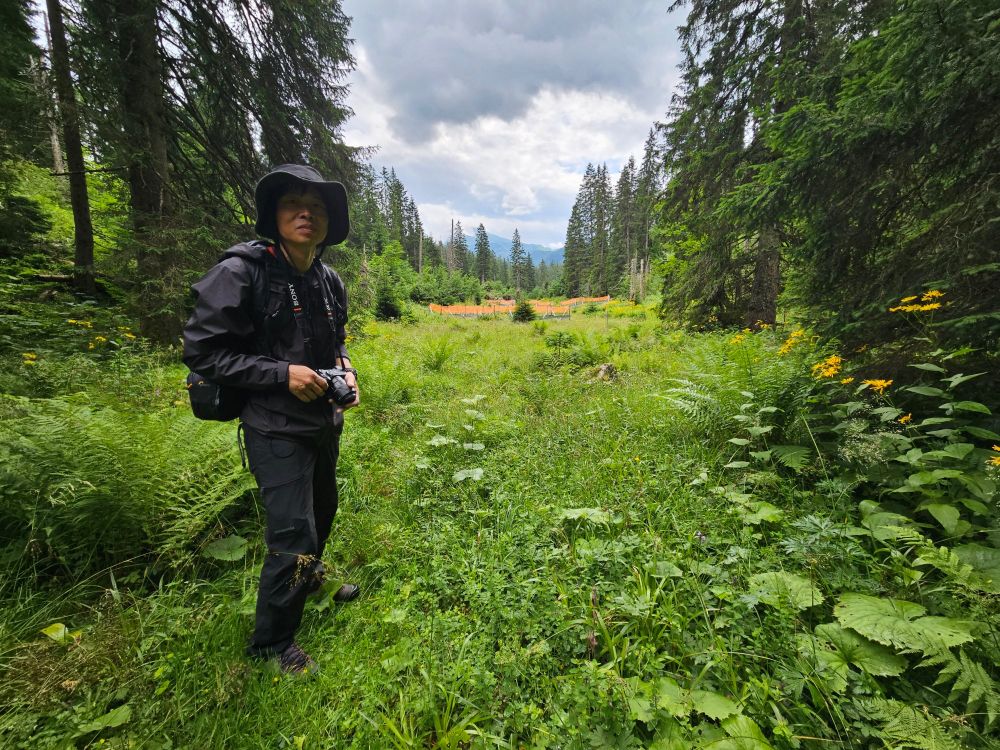
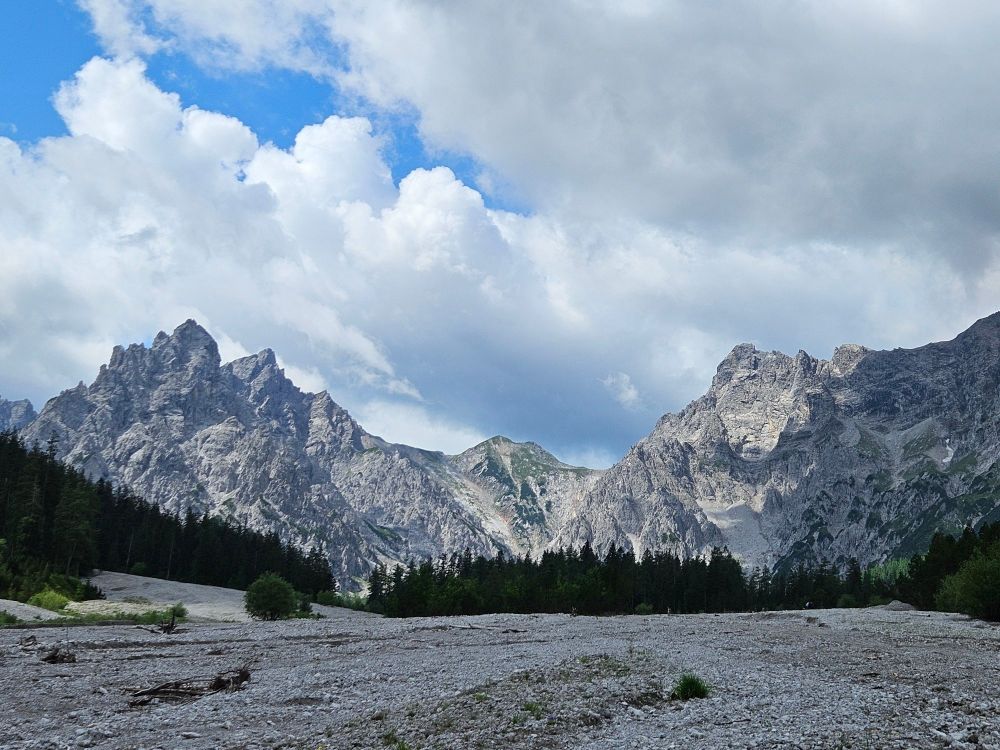
July 16, 2025 at 8:14 AM
Wonderful to have the great @akkym.bsky.social visiting the lab at the moment! Great fun to show Akira our ongoing research in Berchtesgaden National Park, and really cool to discuss ideas for continuing our fruitful collaboration!
Small protected areas are often more easy to install than large ones, but they have a high proportion of their area close to the boundary. Are there boundary effects for important indicators of biodiversity? Find out more here: doi.org/10.1016/j.bi.... First PhD paper of Aikio Erhardt (not on Bsky).
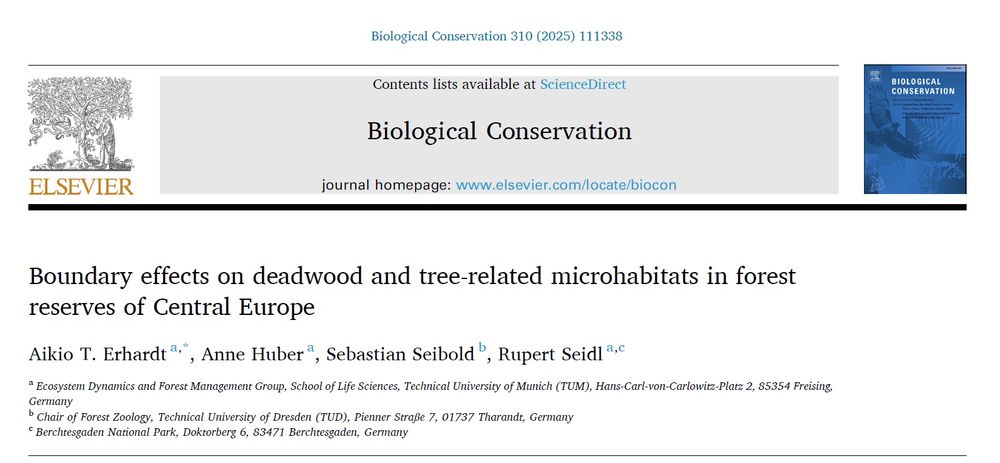
July 9, 2025 at 4:07 AM
Small protected areas are often more easy to install than large ones, but they have a high proportion of their area close to the boundary. Are there boundary effects for important indicators of biodiversity? Find out more here: doi.org/10.1016/j.bi.... First PhD paper of Aikio Erhardt (not on Bsky).
Teaching a field-based class is a great way to discuss current challenges of forest management with students! Also a wonderful opportunity to connect with and learn from practitioners!
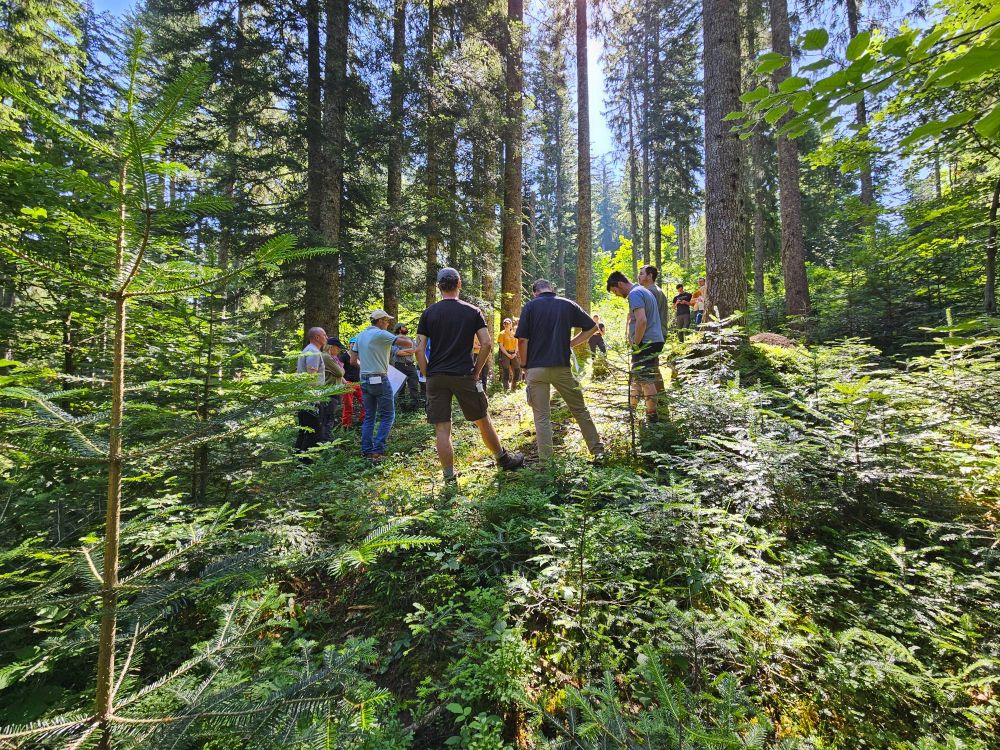

June 26, 2025 at 4:31 AM
Teaching a field-based class is a great way to discuss current challenges of forest management with students! Also a wonderful opportunity to connect with and learn from practitioners!

